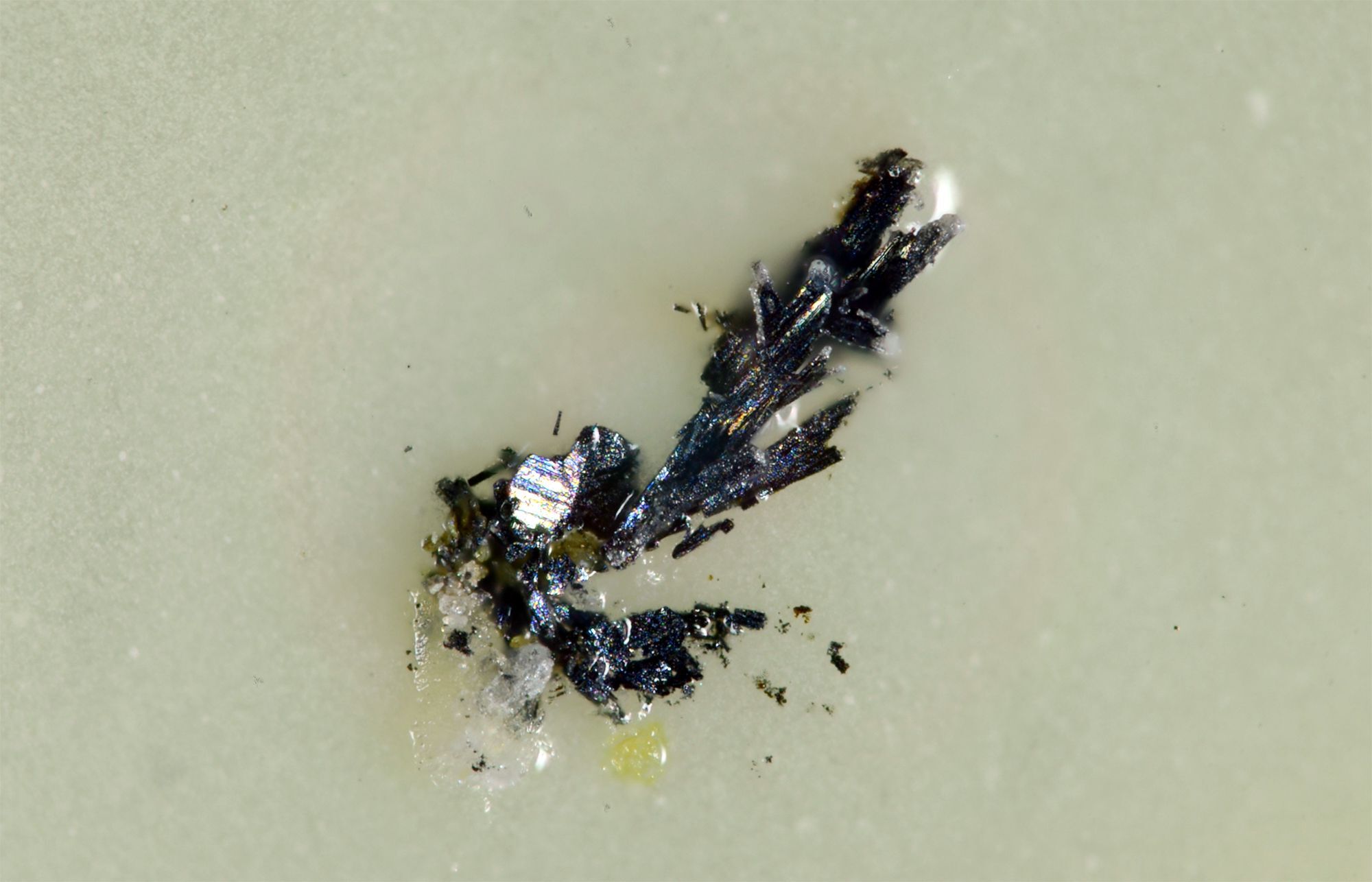
Apophyllite is a mesmerizing mineral that captivates both geologists and crystal enthusiasts alike. But what makes this mineral so special? Apophyllite is known for its stunning clarity, often resembling glass, and its unique ability to form in various shapes and colors. Found in volcanic rocks, this mineral is not just a pretty face; it has fascinating properties and uses. From its role in scientific research to its popularity in metaphysical circles, Apophyllite offers a treasure trove of interesting facts. Whether you're a budding geologist or just curious, these 35 facts will deepen your appreciation for this remarkable mineral.
What is Apophyllite?
Apophyllite is a fascinating mineral known for its stunning crystal formations and unique properties. Its name comes from the Greek words "apo" (off) and "phyllon" (leaf), referring to its tendency to flake apart when heated. Let's dive into some intriguing facts about this captivating mineral.
-
Apophyllite belongs to the phyllosilicate class of minerals. This class is known for its sheet-like structure, which contributes to its flaky nature.
-
It is commonly found in basalt and other volcanic rocks. These environments provide the ideal conditions for apophyllite crystals to form.
-
The mineral is often associated with zeolites. Zeolites are another group of minerals that frequently occur alongside apophyllite in volcanic rocks.
Physical Characteristics of Apophyllite
Apophyllite's physical properties make it a standout among minerals. Its appearance and structure are both unique and beautiful.
-
Apophyllite crystals are typically transparent to translucent. This clarity gives them a glass-like appearance.
-
They can be colorless, white, green, yellow, or even pink. The color variations are due to different impurities within the crystal.
-
The crystals often form in cubic or pyramidal shapes. These geometric forms add to their visual appeal.
-
Apophyllite has a Mohs hardness of 4.5 to 5. This means it is relatively soft compared to other minerals.
-
It has a perfect cleavage in one direction. This property allows it to split easily along flat planes.
Apophyllite's Unique Optical Properties
One of the most fascinating aspects of apophyllite is its optical properties, which make it a favorite among collectors and gem enthusiasts.
-
Apophyllite exhibits strong pearly luster on cleavage surfaces. This luster gives it a shiny, reflective quality.
-
It has a high refractive index. This means it bends light more than many other minerals, contributing to its brilliance.
-
Some apophyllite crystals display fluorescence under UV light. This property makes them glow in the dark, adding to their allure.
Apophyllite in Healing and Metaphysical Practices
Apophyllite is not just admired for its beauty; it is also valued in the world of healing and metaphysical practices.
-
It is believed to have calming and grounding properties. Many people use it to reduce stress and anxiety.
-
Apophyllite is often used in meditation. Its calming energy is said to help deepen meditative states.
-
It is thought to enhance spiritual awareness. Practitioners believe it can help connect with higher realms and spiritual guides.
-
Some use apophyllite to clear negative energy. It is often placed in homes or workspaces to promote a positive environment.
Where to Find Apophyllite
Apophyllite is found in various locations around the world, each offering unique specimens.
-
India is one of the largest sources of apophyllite. The Deccan Traps in Maharashtra are particularly famous for their high-quality crystals.
-
It is also found in Brazil. Brazilian apophyllite is known for its beautiful green crystals.
-
Other notable locations include Canada, Iceland, and the United States. Each of these places produces distinct and beautiful apophyllite specimens.
Apophyllite in Science and Industry
Beyond its aesthetic and metaphysical uses, apophyllite has practical applications in science and industry.
-
It is used in the study of mineralogy. Apophyllite's unique properties make it an interesting subject for scientific research.
-
The mineral is sometimes used in the production of ceramics. Its chemical composition can be beneficial in certain ceramic formulations.
-
Apophyllite can be used as a collector's item. Its beauty and rarity make it a prized addition to mineral collections.
Fun Facts About Apophyllite
Let's wrap up with some fun and lesser-known facts about this intriguing mineral.
-
Apophyllite was first described in 1806. The mineral has been known and studied for over two centuries.
-
It can form in both large and small crystals. Some specimens are tiny, while others can be several inches across.
-
Apophyllite is sometimes called "fish-eye stone." This nickname comes from its pearly luster and reflective surfaces.
-
It is often found in geodes. These hollow, spherical rocks can contain stunning apophyllite crystals inside.
-
Apophyllite can be mistaken for other minerals. Its appearance is similar to that of quartz and other clear minerals.
-
It is a popular mineral for jewelry. Its clarity and beauty make it a favorite for pendants and other pieces.
-
Apophyllite is sometimes used in feng shui. Practitioners believe it can help balance energy in a space.
-
It is a relatively soft mineral. This means it needs to be handled with care to avoid damage.
-
Apophyllite can form in a variety of environments. It is found in both volcanic and sedimentary rocks.
-
The mineral is often used in crystal healing grids. These arrangements of crystals are said to amplify their healing properties.
-
Apophyllite is sometimes used in water purification. Its chemical properties can help remove impurities from water.
-
It is a popular mineral for educational purposes. Its unique properties make it a great teaching tool for geology students.
-
Apophyllite can be found in a variety of colors. Each color variation has its own unique properties and uses.
-
The mineral is often used in art and sculpture. Its beautiful crystals can be incorporated into various artistic creations.
Apophyllite's Fascinating World
Apophyllite isn't just a pretty face in the mineral kingdom. Its unique properties, like high water content and pearly luster, make it a standout. Found in volcanic rocks, this mineral often forms stunning crystal clusters that captivate collectors and geologists alike. Its ability to fluoresce under UV light adds another layer of intrigue.
Beyond its beauty, apophyllite has practical uses. It's used in some industrial applications and is a favorite among crystal healers for its purported metaphysical properties. Whether you're drawn to its scientific aspects or its aesthetic appeal, apophyllite offers something for everyone.
Next time you see a piece of apophyllite, remember it's more than just a mineral. It's a window into the Earth's geological processes and a testament to nature's artistry. Keep exploring, and who knows what other fascinating facts you'll uncover.
Was this page helpful?
Our commitment to delivering trustworthy and engaging content is at the heart of what we do. Each fact on our site is contributed by real users like you, bringing a wealth of diverse insights and information. To ensure the highest standards of accuracy and reliability, our dedicated editors meticulously review each submission. This process guarantees that the facts we share are not only fascinating but also credible. Trust in our commitment to quality and authenticity as you explore and learn with us.


